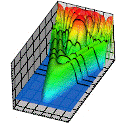Department of Physics and Astronomy: Publications and Other Research
Date of this Version
October 1998
Abstract
The main purpose of this chapter is to review our calculations, whose aim is to explain the target dependence of the triply differential cross sections that has been observed in a number of recent experiments performed at relatively low energies above the ionization threshold for the two outgoing electrons leaving in opposite directions (θ12 = π). One reason for focusing on this θ12 = π geometry is that it is the most important geometry for near-threshold double-escape processes in the WPR theory. Another reason is that up to now, except for H and He targets, the triply differential cross section for low-energy electron-impact ionization has been measured for Ne, Ar, Kr, and Xe targets only in this geometry. In these experiments, for a given sharing of the excess energy by the two outgoing electrons, the differential cross section was measured, typically for a number of different angles between the incident electron beam and the vector connecting the two final-state outgoing electrons. When plotted against this angle, these measured results show striking target dependence.
Since at asymptotic separations the long-range fields in the final state of these ionization processes are the same, the observed target effects must he related to the short-range interactions between the incident electron and the target and between the final-state outgoing electrons and the residual ion. Therefore, in our calculations we focus mostly on the accurate treatment of such short-range interactions. For the interaction between the two final-state continuum electrons, we use an approximation which employs effective screening potentials because of the difficulty of treating simultaneously the long-range and the short-range interactions. The methods we use are essentially distorted-wave methods, but we have also treated some electron-correlation effects perturbatively. Our calculations can be presented in the framework of many-body perturbation theory, and this is another purpose of the present chapter.


Comments
Published in Many-body atomic physics: Lectures on the application of many-body theory to atomic physics, edited by J. J. Boyle and M. S. Pindzola. Cambridge University Press, Cambridge/New York/Melbourne, 1998. Pages 261–286. Copyright © 1998 Cambridge University Press. Used by permission.